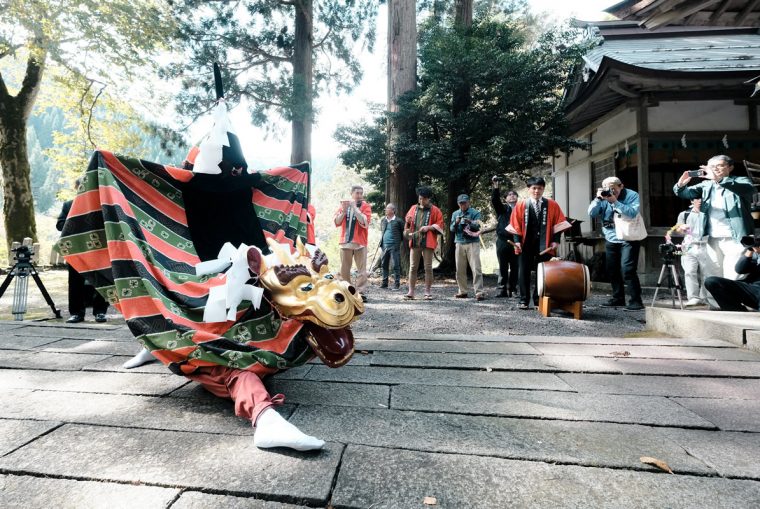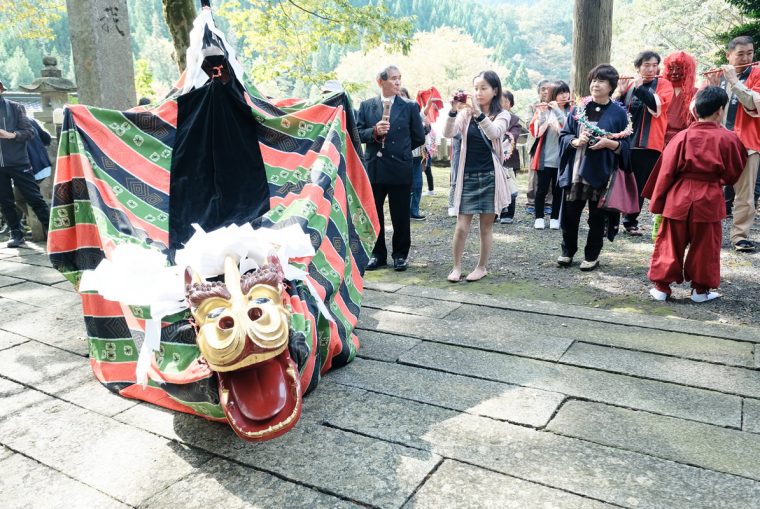Japan Heritage Chizu Town's Kirin Dance-Tottori Prefecture-
Chizu, a forestry-based town in southeast Tottori Prefecture.
The small Ashizu community of eighty families is located in Chizu.The association has nine members, and the head of the organization, Mr. Noriaki Teratani, has this to say: "In the past we had more people, but now with young people leaving the prefecture, we're just getting by." They're doing their best to keep the tradition alive, while confronting modern issues.
The Kirin Dance of Inaba
The Ashizu Kirin Dance Preservation Association

One of the defining features of the Ashizu Kirin Dance is that the cloth body of the Kirin is made up of three colors — black, green and red — rather than other Kirin which are mostly red. The three colors are based on the futon colors of the Ikeda family, which ruled over the Tottori area during the Edo Period. The dance is more subdued and slow tempo than others, and the shojo — an alcohol-loving, monkey-like red sea spirit that often accompanies such performances — does not interfere with the dance. In 1998, Ashizu's Kirin Dance was designated as an prefectural intangible folk-cultural property.

Taking up the role of keeping the tradition alive are the "kid dancers," which started 20 years ago. During the golden age of Kirin Dances, there were three groups: adult dancers, kid dancers for those between elementary and high school, and grand-kid dancers for those even younger. Due to Japan's declining birthrate, the younger groups were put on hold for a period of time, but then started up again five years ago. Now, four young members do their best to follow the adults and perform the dance themselves.
Yuto Takeda was a member of the kid dancers when he was younger, and joined the association officially as an adult. He has said of his experience as a child: "Seeing the adults doing the dance was really cool." As the head of the association, Mr. Teratani has said that the dance has been passed down for generations, and they will protect it for as long as they can.
